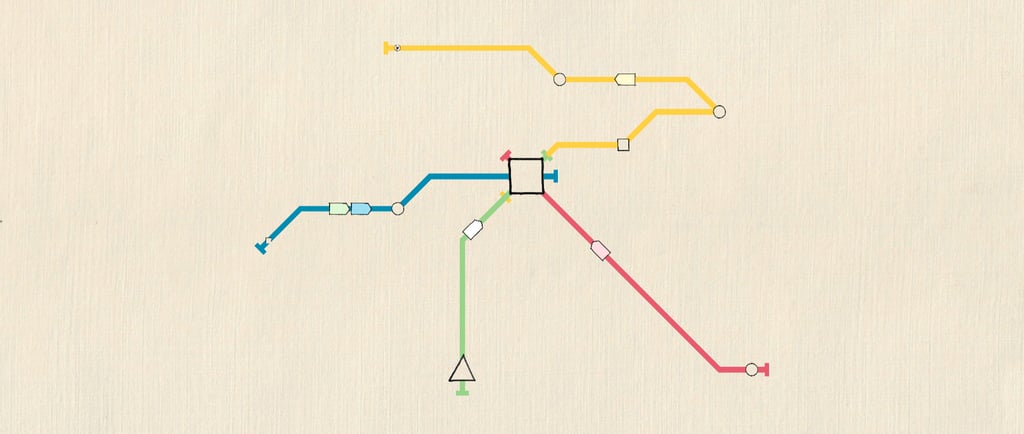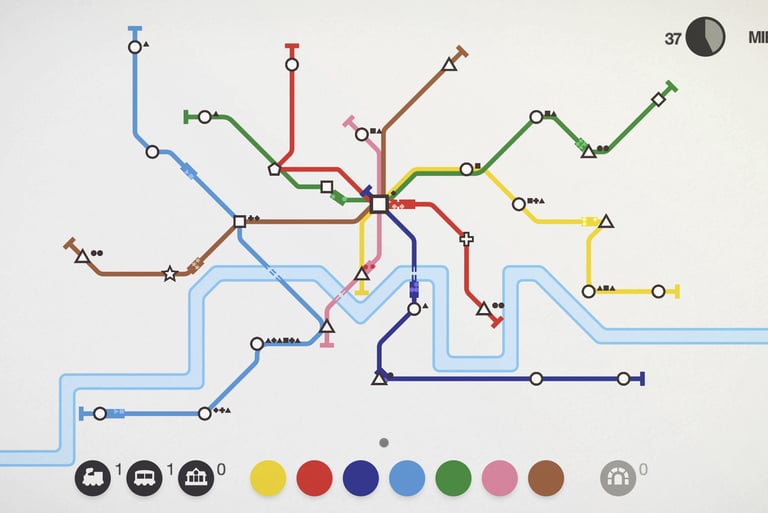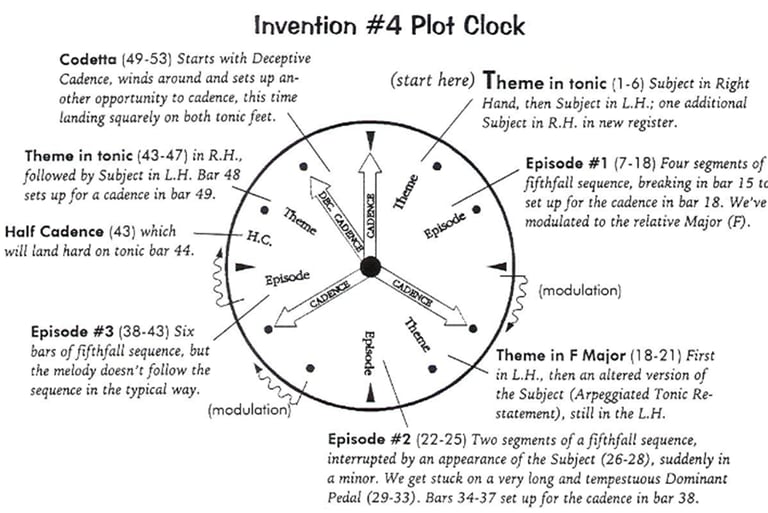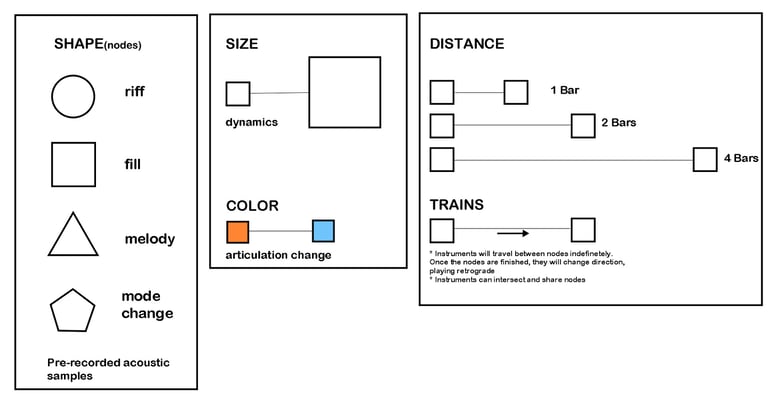The Musicographics Software
With the help and direction of guitarist and software engineer Erdoğan Cem Evin, we developed our very own graphic notation software: the Musicographics software.
9/27/20253 min read


The Core Structure
Nodes sit on a 1–2–4–8 grid, tied to bars at the chosen BPM and meter. Each node holds a WAV file, and its size determines dynamics. If a sample doesn’t fit the grid, the software stretches, chops, or loops it. End nodes stop a train completely, while future updates will allow resets or delays.
Lines define duration: the distance between two nodes corresponds to musical length. Which way the lines are traversed matters as there is a retrograde function, reversing the samples if no retrograde sample is loaded, or playing the selected retrograded sample when the train is moving the opposite direction on the lines.
Trains are moving agents that activate nodes. They are locked to the global pulse and meter, ensuring synchronization, and can be customized in the mixer with labels, colors, volume, and EQ. Multiple trains running together create counterpoint, phasing, and canon-like effects.
Trigger nodes introduce conditional logic by launching new trains when reached. Currently limited, they will evolve into tools for stopping, restarting, or reshaping the network in later versions.
Beyond the DAW
In some ways, Musicographics recalls DAWs such as Midinous, which also uses a node-based approach. But where Midinous functions primarily as a MIDI synthesizer, Musicographics works with audio samples — recorded, composed, or environmental. It is less about triggering notes than shaping time, structure, and the flow of sound.
Two Implementations
The software currently has two main uses. In live performances, the animated score is projected for both audiences and performers, making the music visible as motion. This projection also solves a classic problem of graphic notation: the ambiguity of time. Normally, performers may interpret visual symbols with wildly different durations, requiring a conductor. Here, the software itself provides the shared metronome, freeing musicians to focus on interpretation. In one performance, I used only two nodes labeled “play something easy” and “play something hard.” Despite the simplicity, performers produced very different results, with fascinating variety, all synchronized by the moving trains.
The second use is composition. Instead of guiding performers, the software can map and arrange samples into a structured piece. This can be built from one’s own recordings, archival sources, or environmental audio, making it possible to fold architectural or urban soundscapes directly into musical form.
Why It Matters
For me, the most exciting discoveries have been in exploring counterpoint and phasing. Independent trains weave around each other, sometimes in sync, sometimes diverging, creating evolving textures that feel systematic yet alive. By merging the rigor of algorithmic time with the openness of performer interpretation, Musicographics becomes a bridge between structure and freedom — a way of thinking about music not as a line, but as a landscape of motion.








First draft of the software
mini metro
David fuentes' fıgurıng out melody
Designed by me and programmed by musician and software engineer Erdoğan Cem Evin, the Musicographics software grew out of a fascination with cycles, networks, and patterns. It was influenced by the adaptive soundtrack of the game Mini Metro and David Fuentes’ Figuring Out Melody, which compares looping structures in a Bach fugue and a TV cop show. Both examples shows how musical meaning emerges from motion, repetition, and structure.
Rather than following a traditional left-to-right timeline, Musicographics imagines music as a train network. Trains move across a grid of nodes, triggering sounds in sync with the global tempo and meter. Instead of reading time as a line, the software turns it into a landscape of loops, intersections, and journeys.
A composıtıon wıth samples and triggers
Guided ımprovisation with the musicographics software, OMI, Rotterdam